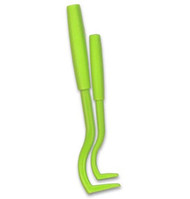Ticks and Dogs
Posted by Ben Watson on 28th Jul 2012
Ticks are in greater numbers in spring and autumn but can be found where temperatures are above 3.5 degrees centigrade any time of the year. It is a common misconception that they jump or fly they simply attach themselves to passing animals; which is why low level pets such as dogs or cats are at an increased risk.
Ticks can carry a multitude of diseases, from wild animals, and these can infect pets or people with just one bite perhaps passing on more than one infection at at a time.
Ticks can transmit:
Borreliosis (Lyme Disease)
Anaplasmosis
Bartonellois
Babesiosis
Louping ill virus (LIV)
Diagnosis is difficult as the symptoms of these diseases can be quite similar.
Every tick is not infected with disease nor will every bit infect your pet, but the longer a tick feeds the greater the risk of transmitting infection.
There are products available that are effective against ticks
For Dogs:
 |
| Frontline dosing chart |
Frontline and Fipnil will kill ticks on dogs within 48 hours while Easidrop Flea and Tick Drops are also effective against ticks. Collars such as Scaliborcan also be a useful product.
For Cats:
Frontline and Fipnil are recommended treatments for ticks on cats, Scalibor and Hyperdrug Flea and Tick drops should never be used on cats
You can check carefully when you groom your pet to see if they are carrying any ticks by brushing against the coat and checking around the ears, eyes and muzzle of your pet.
If you do find a tick it is essential that it is removed correctly.
Incorrect removal of a tick can lead to regurgitation of blood and infected fluids causing an increased risk of infection.Abscesses and scarring may also be caused.
Incorrect tick removal methods include:
Freezing or burning the tick
Applying: spirits, oil or butter, nail varnish, or petroleum jelly,
Squeezing or scratching
 |
| Tick Hook |
Always wear gloveswhen handling a tick and be careful not to touch your eyes, nose or mouth.
A tick hook is invaluable at removing ticks, but if not available fine pointed tweezers applied from the size as close to the skin so the body is not squeezed and then gently pull or lever upwards until the tick is detached.
Dispose of the removed tick carefully and wash your hands thoroughly.

